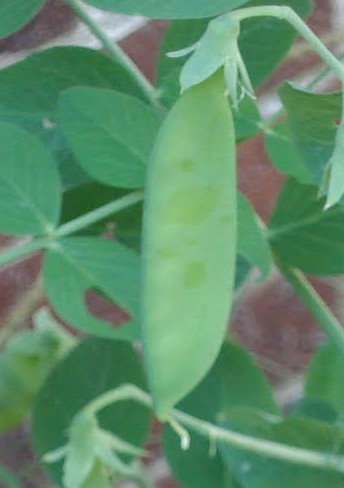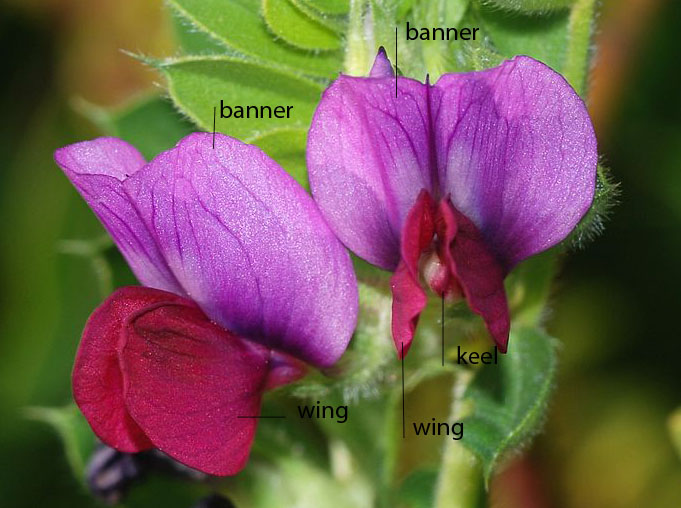 The Pea Family is the third largest land plant family and includes many important and beautiful herbaceous plants, shrubs and trees. Beans, alfalfa, and peanuts are important food crops, lupine, sweet pea, wisteria, and Kentucky coffee tree are attractive garden plants, while kudzu, clover, and vetch can be weedy pests. All share the ability to fix nitrogen from the air into the soil and so can be used to rehabilitate nitrogen-deficient soils. The Pea Family is also known as the Fabaceae from the Latin word faba meaning bean, and the older name, Leguminosae, referring to the fruit which are called legumes.
The Pea Family is the third largest land plant family and includes many important and beautiful herbaceous plants, shrubs and trees. Beans, alfalfa, and peanuts are important food crops, lupine, sweet pea, wisteria, and Kentucky coffee tree are attractive garden plants, while kudzu, clover, and vetch can be weedy pests. All share the ability to fix nitrogen from the air into the soil and so can be used to rehabilitate nitrogen-deficient soils. The Pea Family is also known as the Fabaceae from the Latin word faba meaning bean, and the older name, Leguminosae, referring to the fruit which are called legumes.
 The distinctive characteristics of the the family are:
The distinctive characteristics of the the family are:
 Flower composed of a banner, two wings, and a keel. The keel is composed of two petals fused together so the total number of petals in a flower is five.
Flower composed of a banner, two wings, and a keel. The keel is composed of two petals fused together so the total number of petals in a flower is five.
 The fruit is a legume. This kind of fruit consists of a seed-containing pod that opens on two sides. Green string beans and peanuts are familiar examples.
The fruit is a legume. This kind of fruit consists of a seed-containing pod that opens on two sides. Green string beans and peanuts are familiar examples.
Other characteristics of the Pea Family that may be helpful in identification include pinnately compound leaves and nodules on the roots that fix nitrogen.
There are over 730 genera and 19,400 species and are further grouped in subfamilies. The family is so large and diverse that members occupy many different habitats and can be found in many environments.
